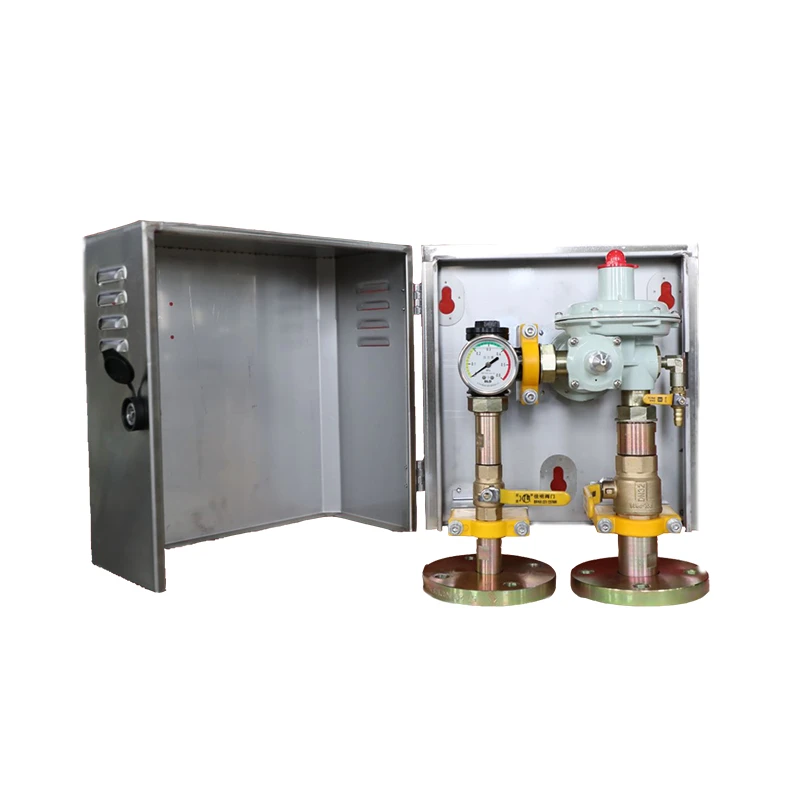
Nov . 09, 2024 12:51
Back to list
Optimizing Pressure Control with Advanced Reducing Devices for Various Applications
Understanding Pressure Reducing Devices An Essential Component in Fluid Control Systems
In the realm of fluid management, pressure reducing devices play a critical role in regulating and maintaining the desired pressure levels within various systems. These devices are essential in industries such as water treatment, gas distribution, and manufacturing processes, where controlling pressure is vital for operational efficiency, safety, and equipment longevity.
What is a Pressure Reducing Device?
A pressure reducing device, often referred to as a pressure regulator or pressure reducing valve (PRV), is a mechanical component that automatically reduces and maintains a lower outlet pressure from a higher inlet pressure. The primary function of these devices is to ensure that the pressure delivered to the downstream equipment or processes remains within specified limits, thus preventing potential damage and enhancing performance.
How Do Pressure Reducing Devices Work?
The operation of a pressure reducing device is relatively straightforward
. These units typically consist of a spring-loaded diaphragm mechanism that responds to changes in pressure. When the inlet pressure exceeds the preset value, the diaphragm moves in response, adjusting the valve position. This adjustment permits more or less fluid flow to maintain the desired downstream pressure.The design of pressure reducing devices can vary significantly based on the specific application. For example, some devices may feature adjustable set points, allowing operators to calibrate the pressure to meet evolving system requirements. Others might include built-in safety features, such as pressure relief valves, to prevent over-pressurization incidents.
Applications of Pressure Reducing Devices
Pressure reducing devices are utilized across various sectors. In municipal water supply systems, for instance, these devices help protect the distribution network from high pressures that could lead to pipe bursts. Similarly, in natural gas applications, PRVs ensure that gas enters homes and businesses at safe, usable pressures.
pressure reducing device

In manufacturing, maintaining consistent pressure is crucial for processes that require precise material handling and mixing. Any fluctuation in pressure can lead to quality issues or even process shutdowns. Thus, incorporating pressure reducing devices is imperative for optimizing production efficiency and product quality.
Benefits of Using Pressure Reducing Devices
1. Safety Over-pressurization can lead to catastrophic failures, including explosions or equipment damage. By regulating pressure, PRVs provide a critical safety mechanism to protect both personnel and equipment.
2. Cost Efficiency Maintaining optimal pressure levels reduces the risk of equipment wear and tear, thereby extending the lifespan of machinery. This can result in significant cost savings in maintenance and replacements.
3. Enhanced Performance Consistent pressure levels ensure that systems operate smoothly, which can enhance overall productivity. In processes where pressure fluctuations can impact the quality of the end product, stable operating conditions are essential.
4. Environmental Protection Efficient pressure regulation can minimize leaks and spills, which is particularly important in industries handling hazardous materials. This enhances compliance with environmental regulations and mitigates the risk of environmental damage.
Conclusion
In conclusion, pressure reducing devices are indispensable components within fluid control systems. Their ability to maintain a stable and safe operating pressure not only ensures the integrity of various processes but also promotes operational efficiency and cost savings. As industries continue to evolve and the focus on safety and efficiency intensifies, the importance of pressure reducing devices will only grow. Thus, understanding their function, application, and benefits is essential for anyone involved in fluid management and system design. With advancements in technology, we can expect even greater innovations in pressure regulation, ensuring that these vital devices continue to meet the demands of modern industry.
Latest news
-
Safety Valve Spring-Loaded Design Overpressure ProtectionNewsJul.25,2025
-
Precision Voltage Regulator AC5 Accuracy Grade PerformanceNewsJul.25,2025
-
Natural Gas Pressure Regulating Skid Industrial Pipeline ApplicationsNewsJul.25,2025
-
Natural Gas Filter Stainless Steel Mesh Element DesignNewsJul.25,2025
-
Gas Pressure Regulator Valve Direct-Acting Spring-Loaded DesignNewsJul.25,2025
-
Decompression Equipment Multi-Stage Heat Exchange System DesignNewsJul.25,2025

